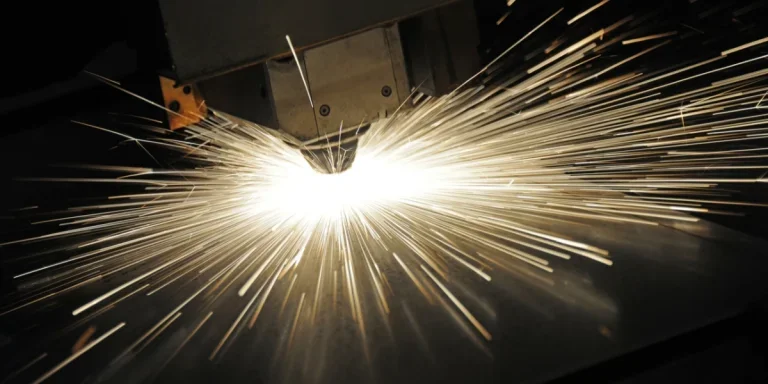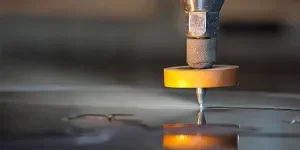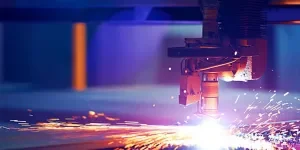Etching is a deceptively simple word that encompasses five very different manufacturing techniques and technologies. The most common types of etching include CO₂ laser, a fiber‐galvo, a ferric-chloride spray line, an electrochemical stencil unit, or a high-speed rotary engraver – each optimized for different jobs.
Trying to compare the machines needed for these tasks on a single checklist quickly becomes a fog of wattage ratings, chemical concentrations, and motion accuracies. A cleaner way to shop is to separate the technologies first, then evaluate the specifics and advantages of each type. In this article, we’ll do just that, helping you to choose the perfect etching machine for your needs.
Table of Contents
What to consider when choosing laser etching machines
1. Which laser family?
2. Pulse engineering and depth control
3. Beam delivery: galvo or gantry?
4. Optics and focus
What to consider when choosing chemical spray-etching lines
1. Etchant chemistry and attack rate
2. Spray mechanics and panel support
3. Rinse-dry modules and waste handling
4. Masking workflow
What to consider when choosing an electro-chemical etching (ECE) system
1. Process fundamentals
2. Key buying considerations
3. Throughput realism
What to consider when choosing mechanical and rotary engravers
1. Do they still make sense?
2. Spindle, motion, and tooling
3. Consumables and maintenance
What to consider before choosing plasma and reactive-ion etchers (RIE)
1. Core physics
2. Selection criteria to consider
3. Throughput economics
6 cross-cutting questions for any technology
In conclusion
What to consider when choosing laser etching machines
1. Which laser family?
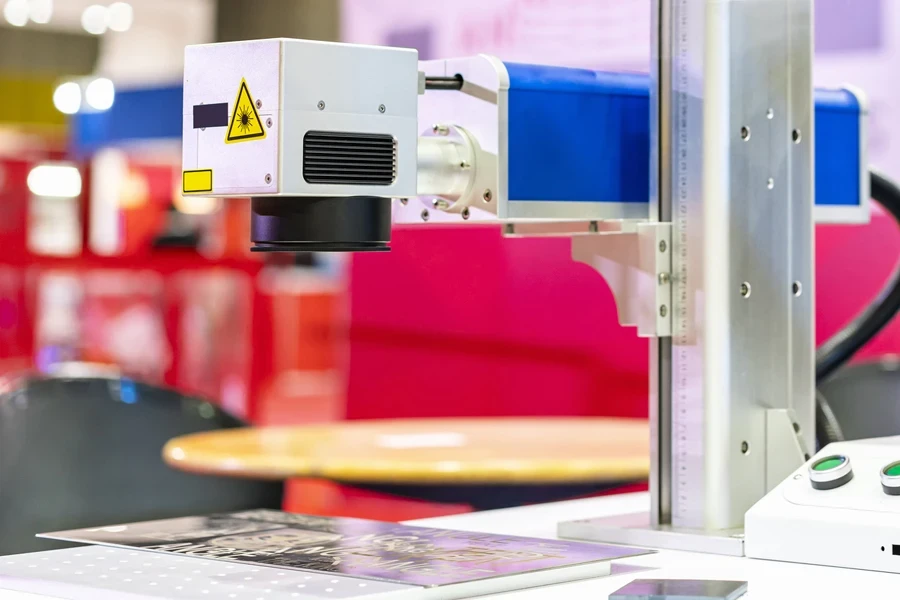
Laser etching machines come in different types, mostly dependent on their specific wavelength. This wavelength determines how efficiently the beam’s photons will work with the material being etched, for example:
- CO₂ (10.6 µm) laser etching machines work best on organic materials like wood, acrylic, and leather, and aren’t great on metals
- Fiber (≈1.06 µm) laser etching machines are preferred for stainless steel, titanium, nickel alloys, many engineering plastics, and black or dark anodized aluminum
- UV (355 nm) laser etching machines deliver “cold” marks on glass, PET, and other heat-sensitive polymers
Choosing the wrong wavelength is like selecting a bit that won’t drill – no amount of extra wattage will fix the mismatch.
2. Pulse engineering and depth control
A machine’s wattage number, as listed in its instruction manual, only indicates its average power. What dictates quality is pulse energy, pulse width, and repetition rate working together. Here’s what to know:
- Q-switched fiber laser: This machine works with fixed 100-ns-scale pulses, making it great for deep, high-contrast marks
- MOPA fiber laser: Allows you to adjust the pulse width (from 5 to 500 nanoseconds) and pulse frequency (from kilohertz to megahertz) separately. This flexibility means using one laser setting to black-mark or anneal delicate items like surgical tools (without removing material). Then, you can easily switch to another setting to ablate or cut deeply into a surface.
- Ultrafast laser: These emit incredibly short bursts of energy (with pulse durations in the picosecond [ps] or femtosecond [fs]), which doesn’t give the heat enough time to spread into the surrounding material. As a result, they can make extremely precise cuts or markings without leaving burrs (rough edges) or oxides (burnt material) behind.
Pro tip: When test-cutting, look at the heat-affected zone (HAZ) and the micro-crack halo under a microscope; they tell you if the pulse parameters are dialled in correctly.
3. Beam delivery: galvo or gantry?
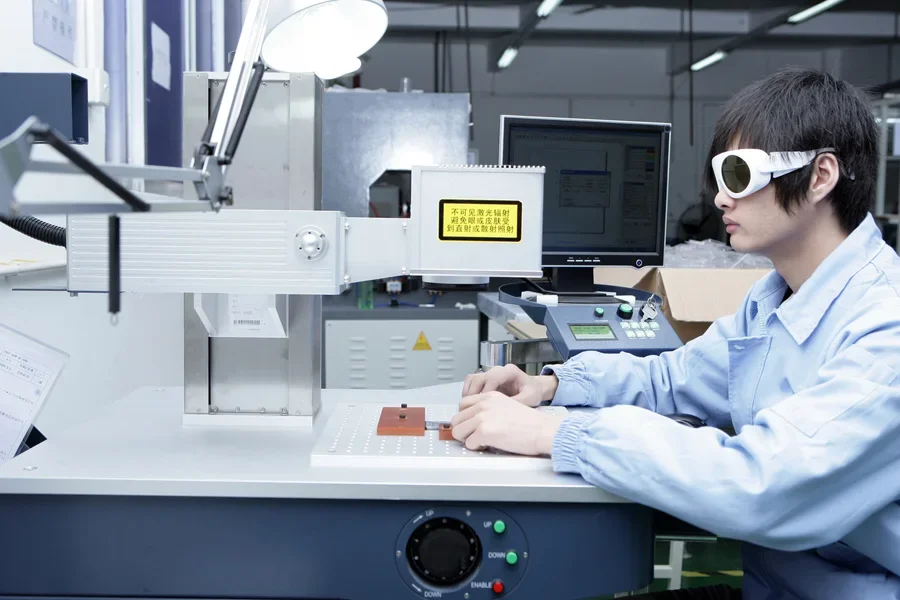
Galvo scanners pivot two tiny mirrors to raster a spot across a 100-300 mm field in milliseconds, delivering an impressive throughput on small- or medium-sized parts.
On the other hand, gantry tables move the entire head, making them better for larger work areas (meter-class signs or cabinetry panels) at the expense of slower acceleration and lower peak resolution.
Here’s a good test question for the vendor: “What is the positioning repeatability at the corners of the field after three hours of continuous rastering?” Their answer will reveal both the laser’s thermal drift and mirror-mount rigidity.
4. Optics and focus
Resolution scales alongside the laser’s spot size, which depends on lens focal length, beam quality (M²), and any pre-expander in the beam path. Premium machines now add dynamic-focus lenses that shift focus while the beam moves, so you can etch around turbine-blade curves or down into injection-mold cavities without refixturing.
What to consider when choosing chemical spray-etching lines
1. Etchant chemistry and attack rate
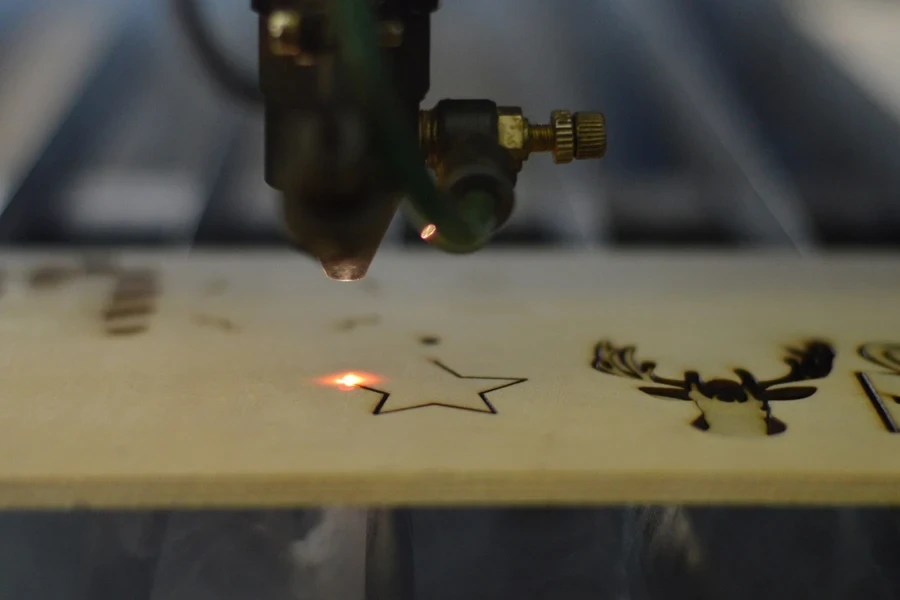
Thanks to its effectiveness and reliability, ferric chloride is copper and brass’s most commonly used chemical etchant. But suppose you want to do high-precision work or use specialty metals (like photo-chemical machining of advanced alloys). In that case, you’ll need more specialized etchants, like cupric nitrate and chromic acid.
The etching speed (or attack rate) determines how quickly the machine will remove materials. It depends on several factors:
- Concentration (°Baumé or molarity)
- Temperature (attack roughly doubles for every 10 °C)
- Agitation method (impinging spray versus flooded soak)
Top-tier etching lines use PID-controlled heat exchangers (for precise temperature regulation) and inline densitometers (for continuous monitoring of solution concentration) to maintain a stable chemical bath (±0.5 °Baumé for density and ±1 °C for temperature).
This tight control ensures that etching performance stays consistent throughout the work shift. That means the line widths you dial in during morning calibration will still be accurate and within spec by the afternoon shift.
2. Spray mechanics and panel support
Nozzle manifold design affects etch uniformity more than chemistry tweaks. For this reason, consider looking for:
- Vertical, sealless pumps that tolerate particulates without shaft leakage
- Oscillating spray bars that even out fresh-etchant coverage
- Panel-support rollers in acid-proof plastics (remember that stainless steel shafts will pit over time)
If your parts are foils thinner than 0.1 mm, ask about edge hold-down and whether the line can avoid “pillow” deformation when ramping up jet pressure.
3. Rinse-dry modules and waste handling
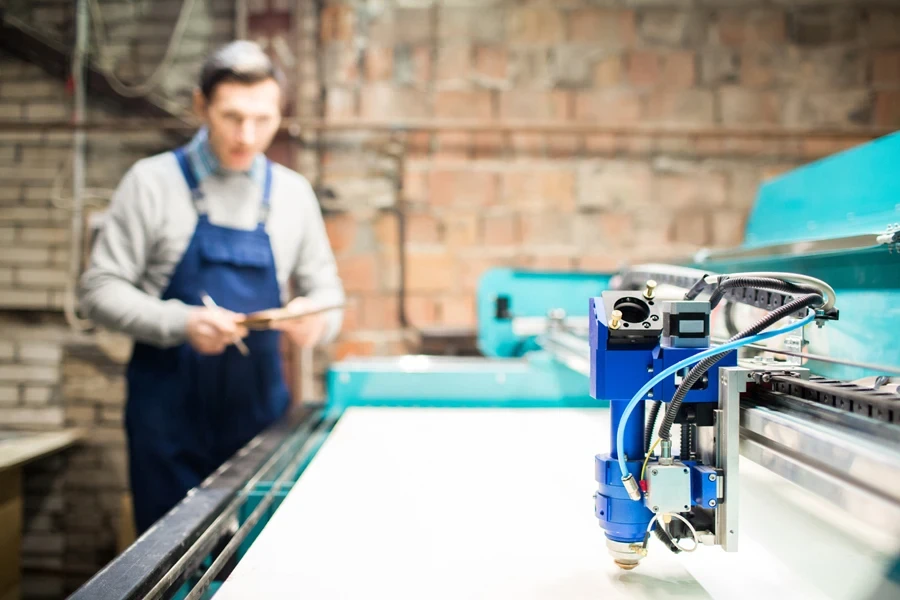
Most high-end systems use squeegee rollers or air knives to reduce chemical drag-out. These help strip excess fluid from the panels, saving etching chemicals while reducing rinse water usage and lowering overall operational costs.
Additionally, ensure the supplier you choose provides documentation on local environmental compliance, especially for waste disposal. In some regions, spent ferric chloride is now regulated as hazardous waste, requiring proper handling and disposal procedures.
4. Masking workflow
Almost half the scrap in a chemical-etch facility comes from resist pinholes, lift, or over-exposure. If you need sub-50 µm features, the photoresist laminator, clean-room environment, and UV exposure unit are as important as the spray box. Ask the vendor whether they supply a turnkey “line including resist” or expect you to source front-end equipment separately.
What to consider when choosing an electro-chemical etching (ECE) system
1. Process fundamentals
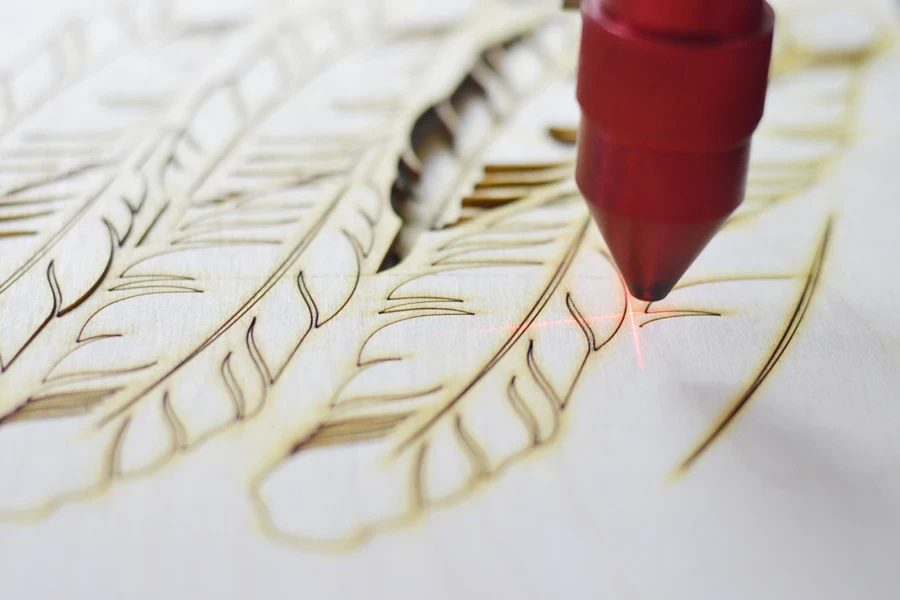
ECE drives ions from a stencil-covered workpiece into an electrolyte under low DC voltage (~6-24 V). The mask is usually a disposable non-woven pad impregnated with a resist-coated substrate. Here are some of its advantages:
- No HAZ means the material dissolves at room temperature, so hardness and tempering remain intact
- Deep, high-contrast marks in hardened tool steel and carbides where lasers struggle
- Minimal capital cost, as most tabletop units start under USD 5,000
2. Key buying considerations
1. Power-supply waveform
The type of electrical waveform used in making systems (especially for electrochemical or laser) greatly impacts mark quality. Here are the main two options:
- Pure direct current (DC) produces deep, dark, and evenly filled cavities, making it perfect for consistent marking
- Pulsed DC, conversely, can create sharper edges and finer details, which is useful for high-precision applications
In highly regulated industries like aerospace, especially for UID (unique identifier marking), what matters most isn’t just how powerful the system is (amperage), but how precisely and consistently it can repeat each pulse. That repeatability ensures every mark meets strict traceability and readability standards.
2. Stencil durability
You can always reuse metal stencils, usually up to thousands of cycles. But if you handle them carelessly, they can cause short circuits. Alternatively, single-use polymer pads prevent shorts but increase consumable costs.
3. Electrolyte composition
Most systems use ferric or sodium-based electrolytes, but aerospace and medical industries often require neutral pH or chloride-free formulas to avoid pitting corrosion on sensitive metals.
3. Throughput realism
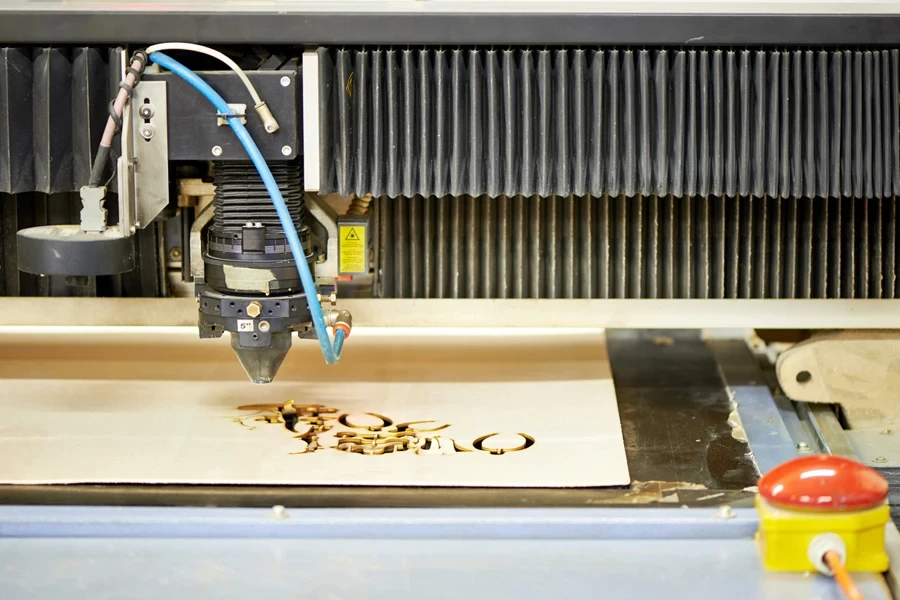
ECE is fundamentally a serial process, meaning a head is pressed into each part individually. For this reason, cycle time equals mark time plus operator handling. Fixture arrays and multi-head bridges help, but it’s better to plan for lower units per hour than lasers unless the batch size is small or each mark is deep enough that a laser would need several passes anyway.
What to consider when choosing mechanical and rotary engravers
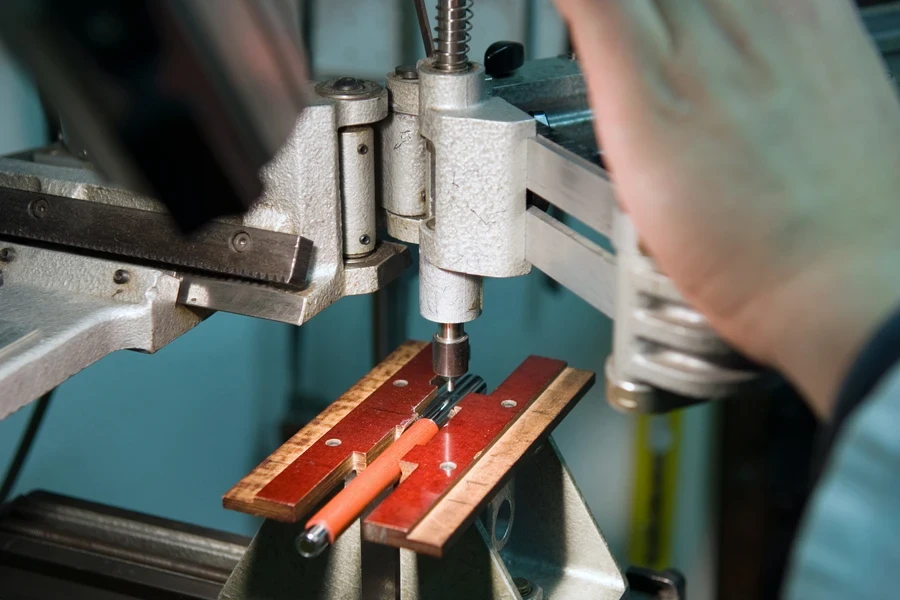
1. Do they still make sense?
High-speed spindle engravers and drag diamond-scribes seem old-fashioned until you need:
- Extra-deep cavities in soft metals (e.g., mold inserts to be cerakoted later)
- Large raised letters on signage, where a “machined look” is better than burnt edges
- High-polish grooves in jewelry or watch dials that must sparkle rather than oxidize
2. Spindle, motion, and tooling
This tool’s power looks small (typically 100-300 W brushed DC or 1-3 kW brushless spindles), but it makes up for it by concentrating its cut force on a tiny tool nose. For this reason, pay attention to:
- Spindle run-out: ≤5 µm is acceptable for metal marks, but you’ll need <2 µm for jewelry
- Tool-holding system: It’s better to choose ER collets over setscrew holders, as they’re better for concentricity
- Linear-motor or ball-screw axes with steel rails and recirculating bearings: Cheap belt drives may have backlash, which you will see as rounded corners
3. Consumables and maintenance
Carbide and PCD cutters wear down fast, especially because deep steel engraving may be required continuously. So, plan for tool replacements, cleaning, and dust extraction. Unlike laser fumes, metal chips are solid and often recyclable, especially if you sort alloys by type.
What to consider before choosing plasma and reactive-ion etchers (RIE)
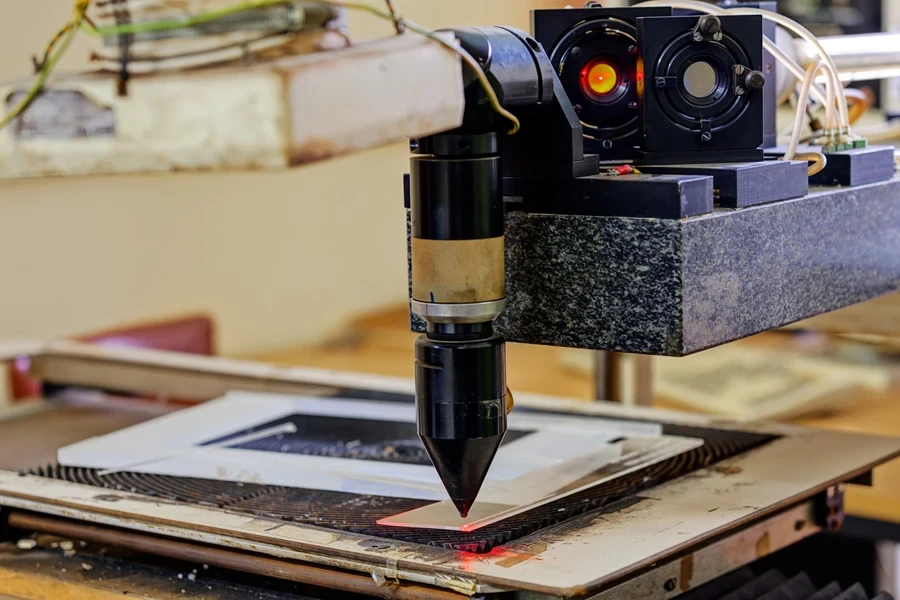
While mainstream etching shops rarely use plasma, the technology dominates semiconductor masks, MEMS parts, and high-end optics.
1. Core physics
A low-pressure RF field ionizes reactive gases (like CF₄, O₂, Cl₂, SF₆). Ions accelerate toward the workpiece and chemically react or knock off atoms, which can be anisotropic if you bias the wafer, and isotropic if you don’t.
2. Selection criteria to consider
- Gas-mix flexibility: When swapping to fluorine, can the cabinet safely handle chlorinated chemistry without cross-contamination?
- Endpoint detection: Will optical emission spectrometry or laser interferometry stop the run exactly at layer breakthrough, which is critical for sub-micron line widths?
- Chuck cooling: To manage wafer temperature, look for electrostatic chucks with helium backside cooling; without them, the profile will shift as the resist softens
- Vacuum integrity: Look for base pressures in the 10⁶ Torr range. After all, a leaky door seal will ruin repeatability faster than a bad recipe.
3. Throughput economics
A plasma run lasts 3-10 min, but pump-down and gas-purge cycles usually add overhead. However, multiple smaller chambers in parallel sometimes out-produce one mega-chamber because you can stagger pump-downs and keep the downstream metrology station busy.
6 cross-cutting questions for any technology
Now that you’ve settled on a type, a few additional questions to ask include:
- Material compatibility: Does the vendor have test coupons on your alloy, plastic, or glass?
- Precision over time: Ask for data that spans an eight-hour run, not a five-minute demo cut
- Software openness: For traceability, ask if you can use a native import of your CAD format, API hooks into MES, and exportable mark logs
- Safety classification: Ask if the vendors have a class-1 laser enclosure, chemical fume hood CFM rating, plasma gas scrubber spec, or mechanical machine’s chip-containment guard
- Lifetime cost: Ask for all costs related to consumables, filters, tool inserts, coolant, etchant disposal, and preventive-maintenance labor. If you buy a lot of consumables, a discounted purchase price can vanish in 12 months.
In conclusion
Choosing which etching machine to use before deciding on a specific model is like picking a destination before booking a flight – you need to know why you’re going there before you buy the ticket.
Segment the market first, researching laser, chemical-spray, electro-chemical, mechanical, and plasma lasers. Then focus on the handful of parameters that affect quality and cost (wavelength and pulse width for lasers, chemistry control for spray lines, power-supply waveform for ECE, spindle precision for mechanical engravers, and gas-mix plus endpoint control for plasma).
Once you’ve got your shortlist according to your material mix, tolerance needs, throughput targets, and regulatory environment requirements, you can compare price tags.
Finally, for more in-depth knowledge that will help you to make a better buying decision, read up on the best practices when selecting laser engraving machines.
